Writing Narrative Leads that Hook Readers
SMACK! Did you feel that, too? If I’m the only one who did, I guess it will just be my little secret. Oh, you’d like to know, too? Well…fine. Sit back, and let me tell you…about writing narrative leads. (See what I did there?)
In this free Ebook, I share some lesson plan ideas and free resources to help you teach writing narrative leads.

I have a confession—I never loved writing. When I was a kid, there was nothing fun about it. I didn’t enjoy it, and it felt like a chore. In grade school, I learned the writing process through research papers and biographies (which was kind of painful). I don’t remember having creative assignments or fun writing activities that made me excited to write.
As someone who now writes ELA curriculum and blog content, I have grown to love writing. Part of the reason why—I discovered—is that it’s fun to be creative and use my own voice and style. When I taught, I wanted students to feel this, too.
Writing narrative leads is a great lesson to promote a love of writing. Students have fun, get creative, and develop their own personal writing style. Also, I don’t know about your students, but mine always needed help writing beginnings and endings. In this post, I’ll share some tips and materials to help your students revise their boring narrative leads and develop ones that will hook their audience.
#1 What is a Narrative Lead?
Say to students: A narrative lead (or hook) is a literary technique used in the opening of a story. It “hooks” the reader’s attention so that they will want to continue reading. It can be a short phrase or a sentence in your narrative writing.
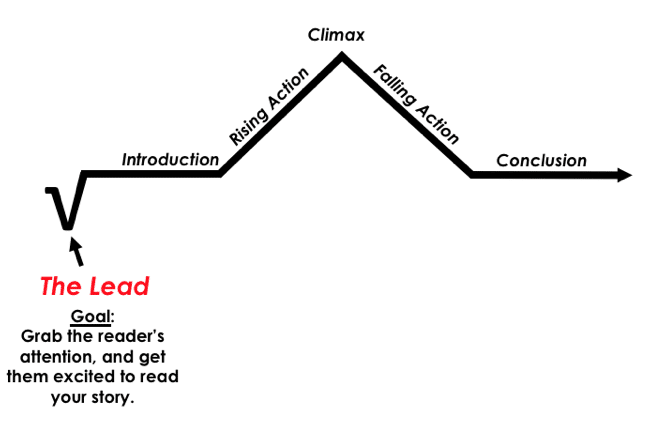
#2 Why Are Narrative Leads So Important?
Say to students: Whether you like it or not, people judge books by their covers…and their titles and their first lines. A good lead or hook is important because you want readers to get excited and interested in your story. If your opening sentences are boring, readers might set your story down and look for something else to read.
#3 How Do You Hook Readers?
Say to students: There are many ways to hook readers. How you do it depends on what kind of tone you want to set for your story and the plot itself. Your lead is a place where you can get creative and use your imagination. Good leads all have one thing in common—they make the reader curious. As you write, don’t tell the reader everything right away. Give them one small piece of the puzzle, and make them want to read your narrative to learn more.

Say to students: The opening line should encourage readers to think and make them eager to jump into your story.
On Day 1, I brought out mentor texts with very interesting leads. I re-read the different leads to my students and talked about what I noticed about certain ones. If you have access to these texts, put piles of texts on tables for students to explore in groups.
#4 Mentor Texts
Give students the opportunity to take a look at different mentor texts. You can choose to do this as a whole-group lesson, or you can have students work in small groups. Give each small group a set number of mentor texts. In the free Ebook, you can click each mentor text to grab a copy for yourself.
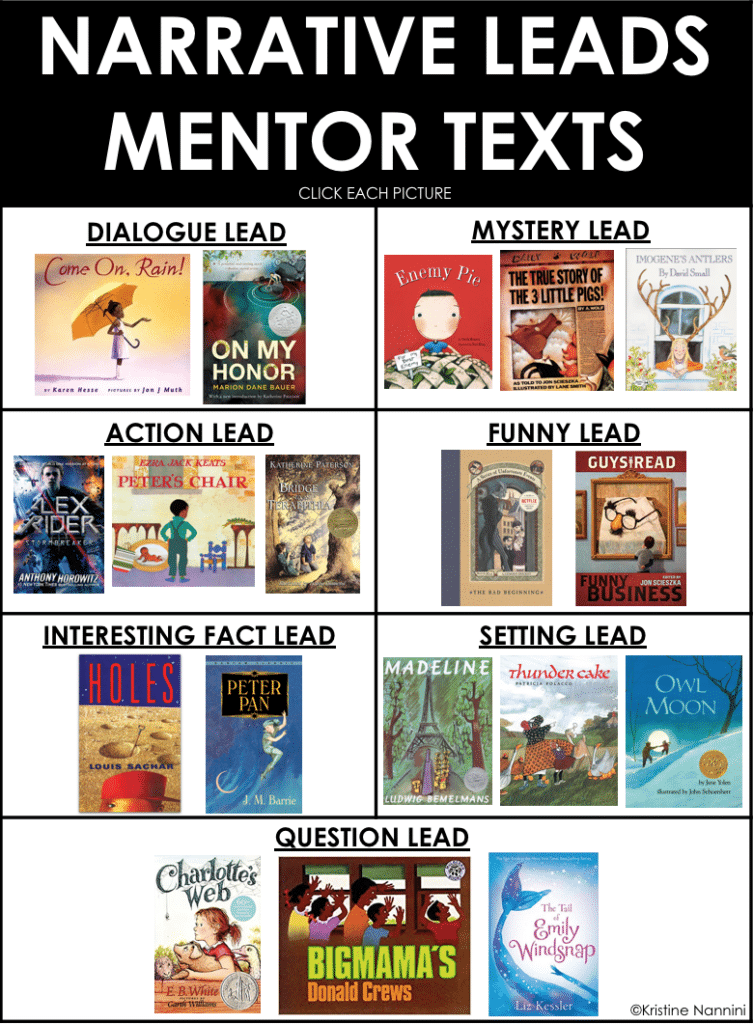
You can hang the printable mentor text posters shown below throughout your classroom or pass them out to students individually.

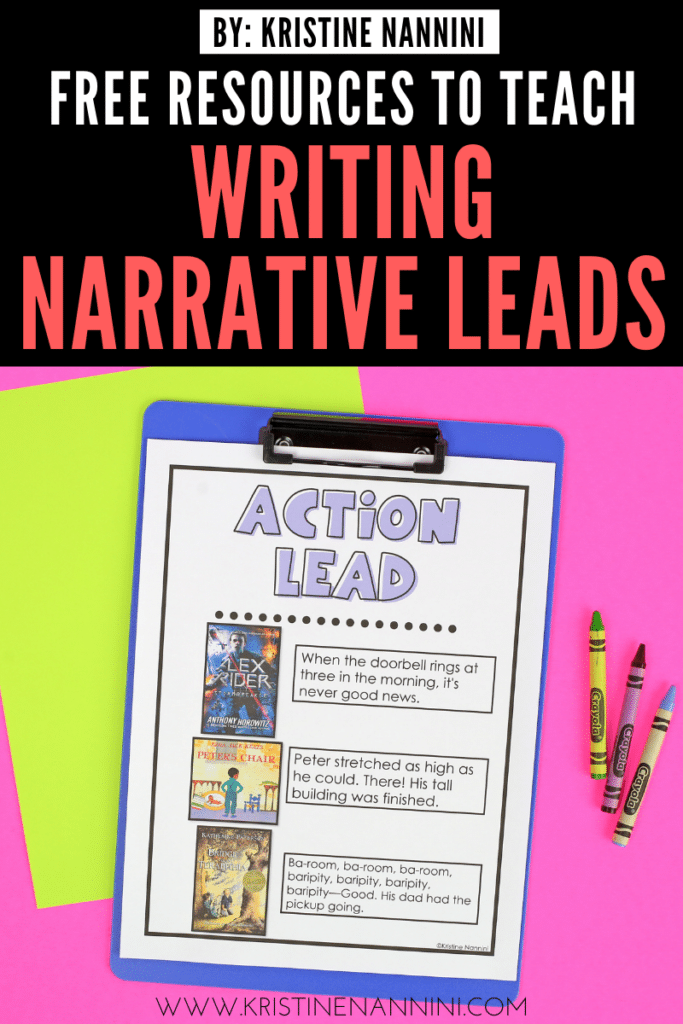
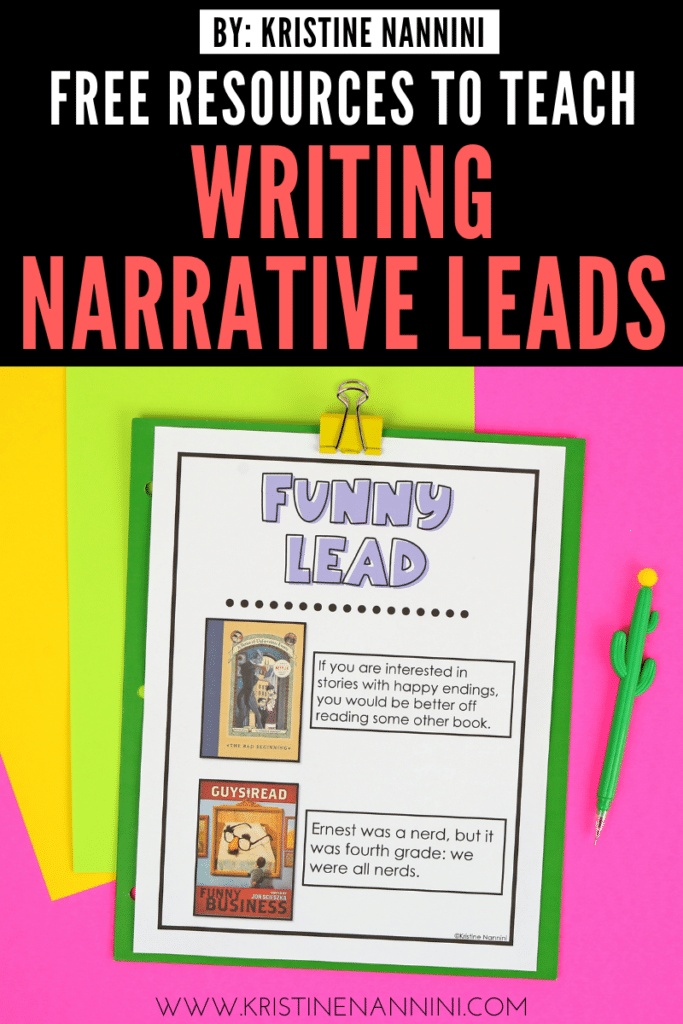



#5 Defining Narrative Leads
After looking at some mentor texts, we spent the next day going over some specific strategies that students can use to write interesting leads. On an anchor chart, we listed some of the strategies we saw authors use in the mentor texts. As a class, we then defined them and came up with some examples. See the anchor chart below. Use this as a guide to create with your students.

You can also hand out the printable below to students to use as a reference.
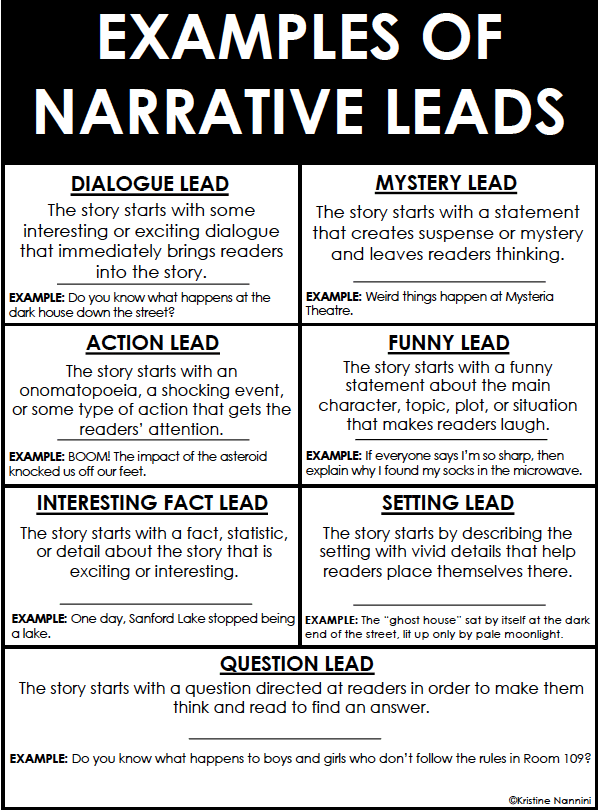
#6 Practicing Narrative Leads
Now that students have had some exposure to narrative leads, I like to have them write some of their own. One of the best things I did in the classroom was have students rewrite boring leads and make them better.
On an anchor chart, I wrote some boring story leads. Then I called on students to create better leads to improve upon the boring ones.
The printables below can be used as practice pages or as guides to create an anchor chart. If you are creating an anchor chart, leave out the answers on the better leads column and call on students to help you finish these.


Say to students: Are you seeing any similarities in the boring leads and in the better leads? The boring leads tell the reader everything. They don’t invite readers to think any deeper about the story. The better leads, on the other hand, create a shocking, interesting, or mysterious part of the story that makes readers stop and think. The reader wants to figure out what’s happening or what you might be writing about.

Say to students: You read fiction from beginning to end, but you don’t have to write it that way. You should begin thinking about your lead after you have written an entire first draft of your narrative. Great leads usually preview or tease an important event or conclusion to the story. It doesn’t make sense to think about leads until you’ve laid out all of the details of your story.
That leads me to the activity below. The activity contains a fully written narrative with a boring lead. Pass it out to students, and ask them to improve the lead.

All the printables shown above also come in a digital format.

Click HERE or opt in below to access all of the information from above in my FREE eBook.

Also see my blog post on Writing Narrative Endings HERE.
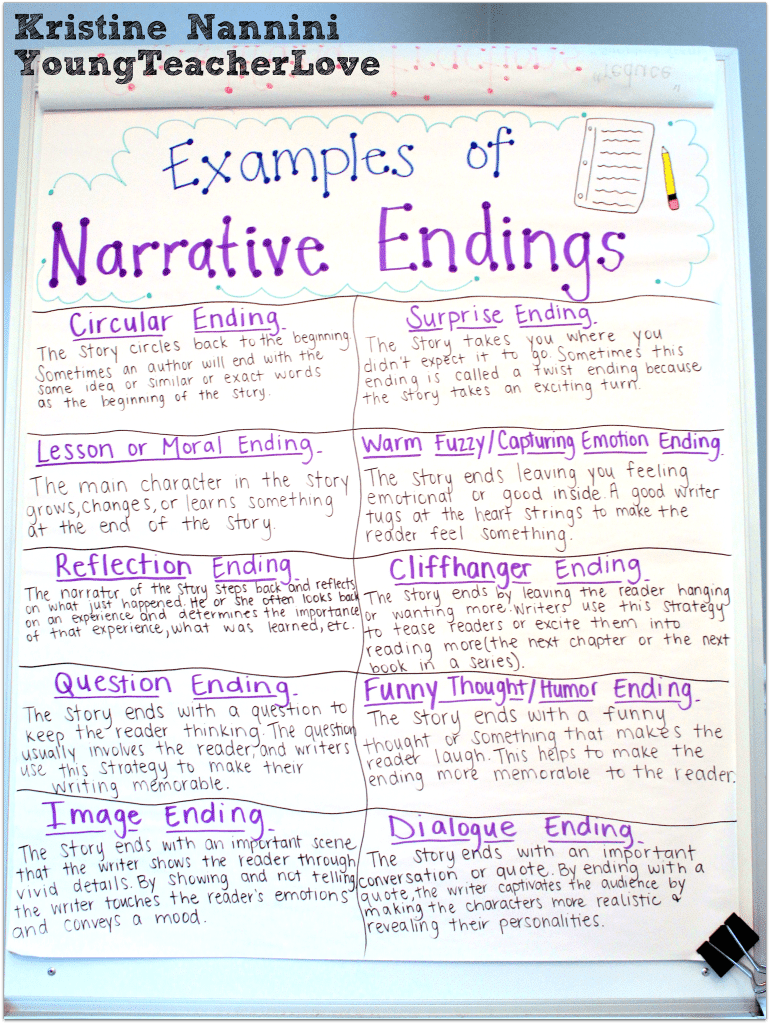


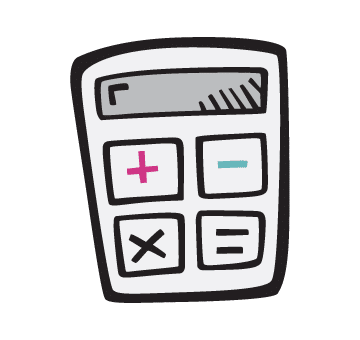





Hi Kristine, You are the first to include narrative endings. I truly appreciate your passion about writing and will be taking some ideas to put in my planning for next year’s quarter 1 writing requirements. Thank you!
I appreciate your kind words so much, Cathy! I am so happy to help!
I love your work so much! I have purchased so many Common Core-aligned bundles and single lessons for 4th grade and absolutely love them. However, I recently switched to 3rd grade and I have been trying to find and purchase as much material, for my new 3rd-grade class. You have helped me prepare lessons and keep tasks interesting and yet completely on target for CCSS. I can\’t wait to use this material for my Writing Narrative practice for MCAS. Thank you again, for all you do for us and our students.
Lynn
Thank you so much for your kind words, Lynn!